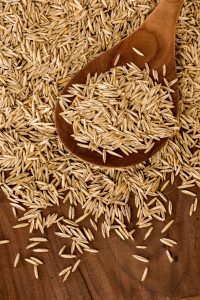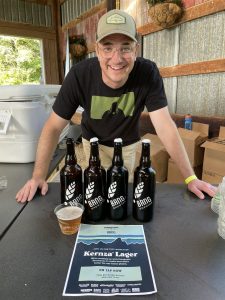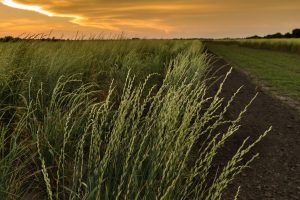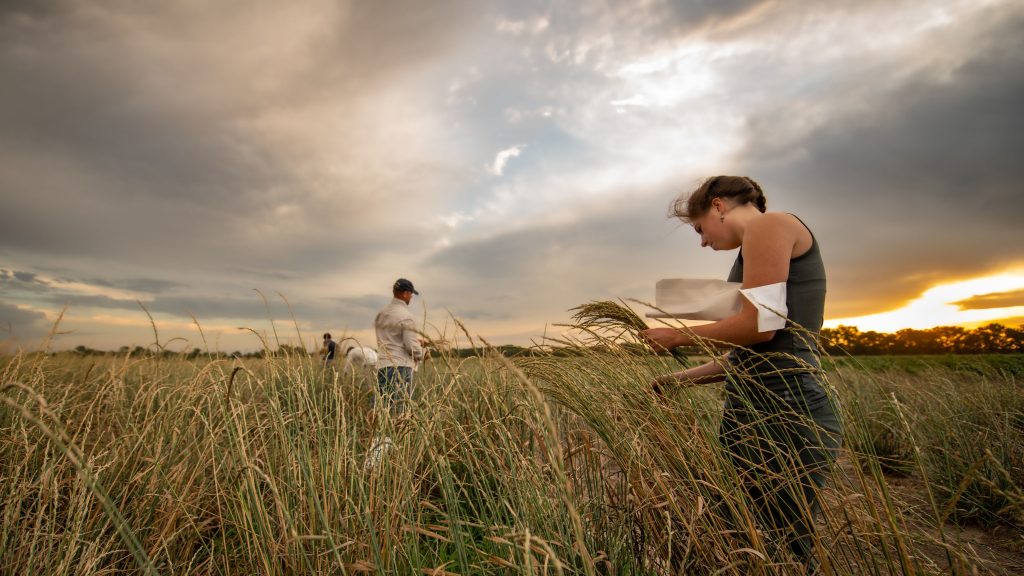Before millions of acres of native oak trees, prairie grasses and wildflowers were replaced by annual rotations of row crops, the landscapes of Wisconsin were a self-sustaining tapestry of life. Vast expanses of open oak savanna and native prairie supported thousands of species of birds, pollinators, arachnids, reptiles, and mammals. The natural balance of these ecosystems relied on deep-rooted perennial grasses and trees to hold the rich soils in place and stabilize the land during rain events and droughts while providing an abundance of seeds for dispersal and food. The prolific monocultures of corn and soy across Wisconsin’s modern landscapes offer habitat and sustenance to only one species: humans. The deep soils of the Midwestern prairies are literally blowing away after decades of intensive plowing and annual erosion. But another form of agriculture is growing in Wisconsin— one that functions much closer to native prairies and oak savannas than conventional farming.
In a world plagued by soil erosion, water pollution, and carbon emissions, there is a revolution of resilience, of the land’s ability to heal itself and feed us at the same time. The story of this revolution is written in the roots of a remarkable perennial grain and forage plant known as Kernza®.

Kernza® Perennial Grain is a distant cousin of the shallow-rooted annual wheat that blankets about 300,000 acres of Wisconsin cropland. Developed over four decades by botanists at the Rodale Institute and the Land Institute, Kernza® combines the best qualities of both perennial grass and annual wheat. Its roots run deep like prairie grasses—reaching over 10 feet down into the earth to hold soil in place for decades at a time. This feature allows the plants to access water and nutrients far beyond the reach of shallow-rooted annual wheat, preventing soil erosion, enabling access to water in times of severe drought, and sequestering carbon from the atmosphere year-round. In good conditions, the long, slender Kernza® seed heads can contain more seeds than an annual wheat head, increasing yields for farmers. After harvest, the remaining leaves and stems can be grazed by cattle or collected and stored as nutrient-rich winter forage material, providing additional value for farmers. Kernza® can be grown in open fields, like a prairie, or in companionship with fruit and nut-bearing trees and livestock pastures.
There are about 200 acres of Kernza® being grown in Wisconsin today, but as demand increases for the grain’s sweet, nutty flavor profile, more growers are becoming interested in planting this revolutionary grain. Thanks to Minnesota’s innovative policies and supply chain development for emerging crops like Kernza®, Wisconsin farmers and businesses can look to our western neighbors for valuable insights on expanding the market for this promising alternative to conventional wheat.

Collaborative efforts have already led to significant developments in Kernza® adoption in Wisconsin. Nicole Tautges, an agroecologist with Michael Fields Agricultural Institute, wrote the New Kernza® Grower Guide for Wisconsin farmers, and is working closely with over a dozen Wisconsin growers to facilitate sourcing for breweries like Lakefront Brewing. Other Wisconsin breweries, including Driftless, Vintage, and Octopi, are either currently offering or planning to introduce seasonal specialty batches featuring Kernza®. Tattersall Distillery is also joining the movement, crafting the very first 100% Kernza® whiskey at their River Falls, Wis., distillery.

Bakeries like Bloom Bake Shop in Madison have turned Kernza® flour into climate-friendly sourdough bread, and other bakers are showcasing the value of this versatile, flavorful flour in pancakes, cupcakes, shortbread cookies, and other sweet and savory treats. Perennial Pantry and Patagonia Provisions offer pastas and crackers made from Kernza® flour. Many of these products were on display at the 2023 Kernza® Fest held in Stockholm, Wis., and at two Kernza® Field Days hosted at Michael Fields Agricultural Institute this past July and August.
Limited access to consistent quantity of grains, challenges with processing the small, hard kernels, and narrow distribution systems contribute to the slow development of this wonder grain. But Clean Wisconsin and Michael Fields Agricultural Institute are collaborating to form a Wisconsin-grown Kernza® Hub for farmers, brewers, distillers, and bakers in our state to address supply-chain bottlenecks impacting Wisconsin’s ability to grow and distribute this high-value, climate-smart agricultural product.
The success of Kernza® in Wisconsin is dependent on growers, processers, and consumers realizing that Kernza® represents a crucial shift in thinking—a recognition that our food systems and prosperity are intricately tied to the well-being of the land.


